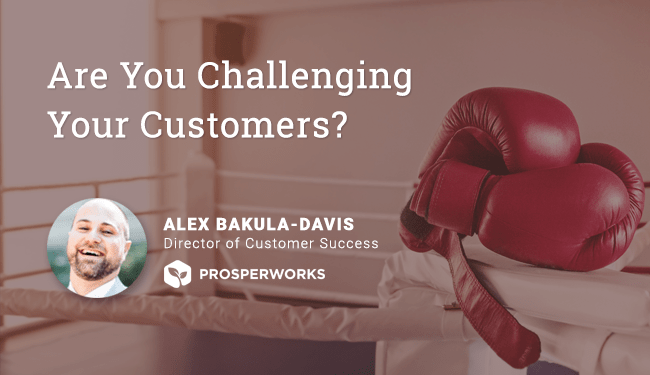
The Challenger Concept
The “challenger” concept was popularized as a sales strategy by Matthew Dixon & Brent Adamson in their book, The Challenger Sale. In their view, the sales landscape had fundamentally shifted, and prospects were now too busy, too well informed, and had too many options for a long-term relationship strategy to work. Instead, Dixon and Adamson proposed consultative selling that wasn’t afraid to challenge the customer’s assumptions.
They broke the model into three steps:
- Teach: Teach prospects how their product solves common industry challenges.
- Tailor: Tailor the solution to the potential customer’s specific needs.
- Take Control: Push the prospect by challenging their assumptions.
Although the challenger model was originally designed for sales, it also has a lot of application in Customer Success!
How to leverage the Challenger Concept for Customer Success
Today, customers increasingly expect that Customer Success will help them not only achieve value with a product but also impact their business as a whole.
As mentioned before, a customer’s habits can often be the roadblock to achieving success. So, if that expected impact is what customers truly want (and for the most part it is), then we need to challenge them to modify their behavior and enact true change management. Using the Challenger Sale strategies are a great place to start.
What does this mean in practice?
First, let’s understand the requirements for this strategy to work:
- Be fully invested in the customer’s success – The challenger strategy is not about attacking customers, it is about positioning them for real long-term success. You need to have their best interest in mind and need to be able to communicate that to them.
- Learn best practices with your product – You have to be a product expert to begin to build trust and be seen as a consultant.
- Understand their business – You and your team need to be able to understand the specific use-cases for their business and industry.
- Teach them something new – If you understand their use-case, then your product might show them a new way to think about their business.
- Read the customer correctly – This strategy may not work with all customers. There will be some who will react poorly to being challenged or are advanced enough that this strategy isn’t needed.
- Share customer stories – Give real examples from other customers to illustrate your points and paint the right picture of success.
Once you have a foundation, “challenging” the customer comes down to getting them to change. It may involve changing their processes, goals, preconceived notions, strategy, or anything you feel is currently inhibiting their success. Some examples of areas to challenge customers are:
- Pushing against their success criteria – Some customer’s expectations of your product can either be unrealistic or lacking enough detail to give you measurable ROI.
- Scrutinizing bad workflows – Are customers using your product in a way you think fails to deliver value? Be candid and let them know how their behavior will decrease the potential value they receive. Give examples of the success other customers have seen following your best practices.
- Addressing low engagement or usage – A customer who has low engagement has a low likelihood of success. Be upfront and let them know that you are worried that they are not heading for success based on their engagement. Confirm their expectations and compare that to their current path.
Finally, you have the foundation, you know what you want them to change, now you need to convince them to do so. This is the most difficult part as it requires asking tough questions or voicing concerns that may produce some friction. It’s important to conduct this part with respect and with the goal of helping them and their business.
Some examples of the types of questions or statements you can use are:
- “You mentioned you want to be able to improve X, but how will you quantify and measure it? In what time frame?”
- “I understand your workflow is to do X, then Z, then Y, but from my experience, when customers have done that in the past they end up seeing less value.”
- “You signed up to achieve X, but your team hasn’t logged in regularly since the beginning. Most customers who don’t make our product a habit from the start won’t see an improvement in X. Will you be able to work with me to get them engaged?”
- “I’ve recently been working with customer X who is in a similar industry, and they’ve been successful in increasing Y. You haven’t mentioned that as one of your criteria for success, but I think you should consider it as a future goal.”
- I understand you want us to prioritize a new feature but it’s outside the scope of our product’s intended workflow. What is the fundamental business problem you are trying to address?
Do any of these hypothetical examples resonate with you?
The idea is to cut through unnecessary diplomacy and be honest with your customers.
To recap, concepts from the Challenger Sale can be repurposed to help Customer Success Managers deliver more value for their customers. This strategy requires CSMs to be 1) invested in their customer’s success, 2) knowledgeable about their client’s business and use-case, and 3) able to teach customers something new. With this foundation, CSMs can challenge misguided assumptions with thoughtful and pointed questions.
Will this work for me?
While it isn’t easy, “challenging” customers is a powerful tool in a CSMs arsenal to help customers whose biggest hurdle is their own behavior.